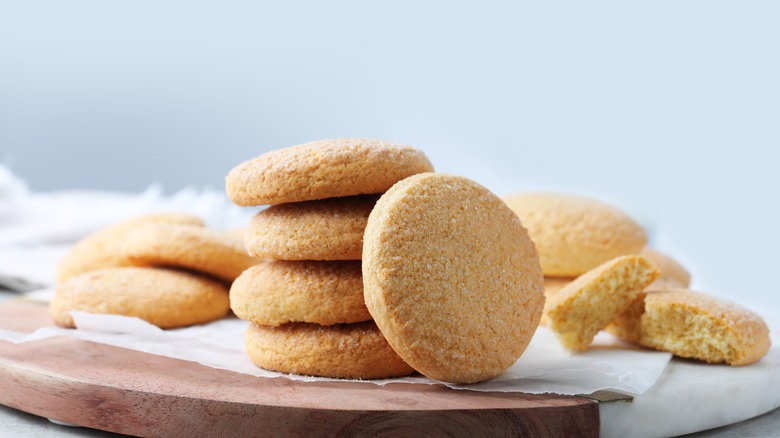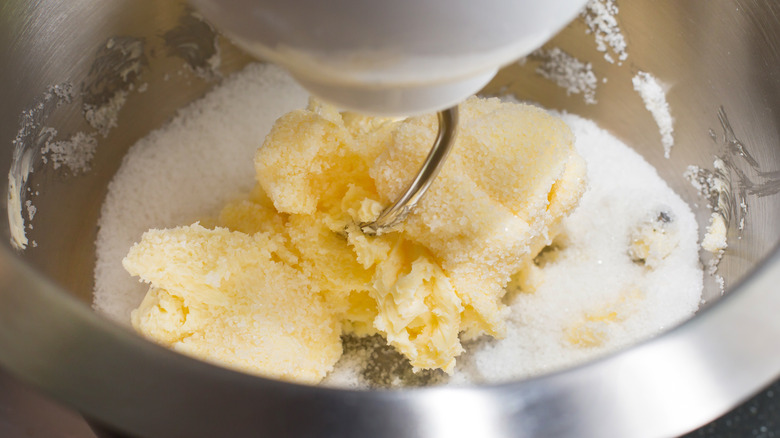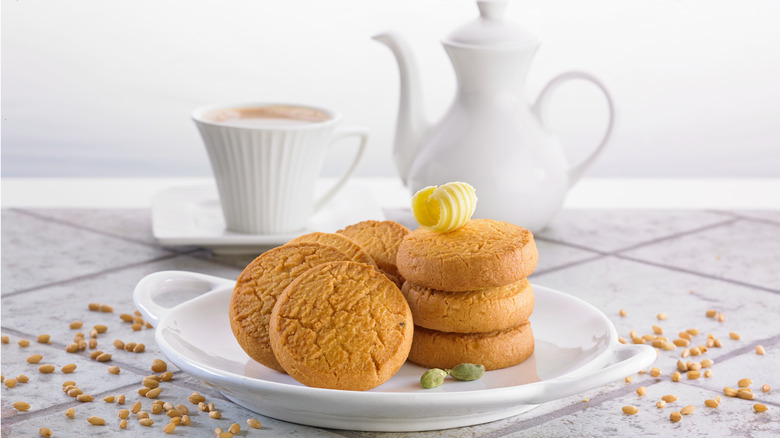The Best Butter To Use For Making Cookies
When it comes to delectable baked goods like cookies, the butter really matters. This key ingredient is responsible for texture and flavor, and the amount you use can create cookies that can be crisp and lacy, chewy and rich, or soft and cakey. But, if you are wondering, "What is the best butter to use for making cookies?" it turns out, there is one solid answer.
Food Republic spoke to Janice Sung, pastry chef of Figure Eight, as well as Anna Gordon, chef and owner of The Good Batch, to get their tips on which butter they would choose for the baking project, and they both agreed. Of all the different kinds of butter available, European-style is the definitive way to go.
European butter has at least 82% (and up to 90%) fat, while butter made in the United States typically only contains 80% fat. Sung and Gordon like Kerrygold butter, which is imported the United States from Ireland. Plugra is another one of their favorite brands that's done in a European-style, produced in the United States, and prized by bakers for its consistent fat content. If you can't get your hands on these options, look for other brands with a higher fat percentage — but comparatively lower price tag — like Organic Valley, Vital Farms, and Vermont Creamery.
Why high-fat butter makes a difference
Creaming is a process key to making cookies, in which softened butter and sugar are beaten together until completely combined. It allows for the fat and sugar to be evenly distributed throughout the dough once the eggs and flour are added; as well, creaming incorporates air into the mixture.
Figure Eight's Janice Sung explains why butters with higher fat content are better for the creaming process: "On a molecular level when creaming, the sugar crystals can be thought of as little shovels that dig into the butter and leave air behind. The softer, or [more] pliable the butter is for the sugar crystals to dig into, the better your final cookie dough product can be."
European butter is just easier to work with, too. You can test the differences in the two styles to see for yourself by pressing your finger into a block of each. Sung says that, with American butter, "You may notice a kind of 'shattering' happen on the surface" whereas European butter is "softer and molds to the pressure of your finger."
Butter is also a flavor powerhouse
European butter is also prized for its vibrant tang and a grassy taste that whispers of the land the cows were raised on, while American butters are often manufactured to have a more muted flavor. While The Good Batch's Anna Gordon does have a preference for European-style butter in most cases, she does say, "For cookies and cakes, where so many other ingredients are competing for flavor, I find generic American, unsalted butter, to work just fine."
So, if you do not want to splurge on fancy butter in every recipe, save it for doughs where the butter flavor really takes center stage, like pie crust, laminated doughs, simple sugar cookies, classic pound cake, and shortbread cookie dough.
Gordon has another buttery tip: Amp up the flavor of American-style butter by browning it before you use it. Simply melt the butter in a pan over low heat, and stir constantly until the foaming subsides and the grainy milk solids are toasty brown. Opt for a light colored pan like stainless steel or ceramic rather than non-stick or cast iron so you can really keep an eye on how the color of the butter changes. Gordon explains that you can then let the brown butter re-solidify, and treat it as regular butter. She says, "With a lower water content and cooked lactose, the result can be a really tender, nuttier flavor and texture."



